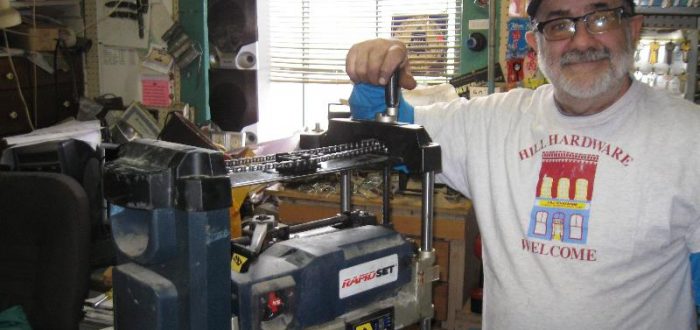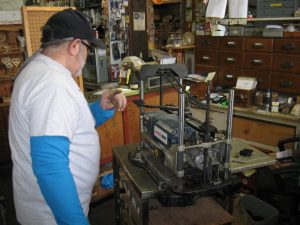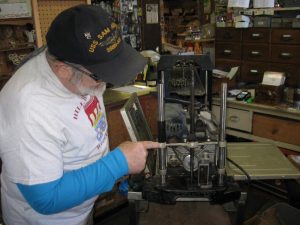Just yesterday I came across a project that illustrates one of my beliefs in life, that 90 percent of everything is @#$%&! Of course what I mean by that is that when there is a problem with any machine, the problem is usually just dirt, rust or general neglect. Paul, the fellow that works for us at the hardware store, does some woodworking in his spare time. This week he mentioned that he was having trouble with his planer. I’ve never worked on a planer before, but I know how they are supposed to operate.
If you’re not familiar with woodworking equipment, a planer is used to make a plank of wood thinner and smoother. It “planes” one side of the wood down with a horizontal spindle that has three very sharp blades mounted on it. You feed the wood in one side on the machine base and the rotating knives peel off the top side of the board. To get the wood to the correct thickness the knife shaft is mounted on a movable top casting that adjusts up and down on four corner shafts controlled by two adjustment screws that are chain driven together from an adjustment handle.
Sounds simple right? (simple like rocket science) Only Paul’s machine seemed to be jammed and would not adjust in height. One corner of the adjustable casting had already started to crack and obviously it was not moving easily. At first we thought that the cracked casting was causing the slide to bind up, so we decided to take the machine apart and then make a steel splint for it. When we proceeded with the disassembly, though, we found out that the opposite was true. The sliding shaft on one corner of the machine was bound up tight and it would not come out!
Well, everything will come apart if you work at it long enough and follow the correct steps. First we let it soak with penetrating oil. Then I got out my rawhide hammer with its soft face to try to knock it out without marring the end of the shaft, no luck. Then we got out the propane torch and gently heated the casting (it was aluminum) and got it to expand just enough to get the shaft to move a little with the hammer. It took three heating sessions before the shaft came free, but we finally got it. Sure enough there was a little bit of rust on the shaft right where it was stuck in the casting.
I used the fine wire wheel on the bench grinder downstairs to clean up the shaft while Paul cleaned out the hole in the casting with a little emery paper. After a few tries, the shaft slid in there like butter. We then reassembled the planer and adjusted the two ends so that they were parallel again. Paul hasn’t had a chance to run it since the repair was completed, but it now adjusts up and down smoothly, just like it was supposed to. I just wish all repairs went that well, at the Old Hardware Store…





